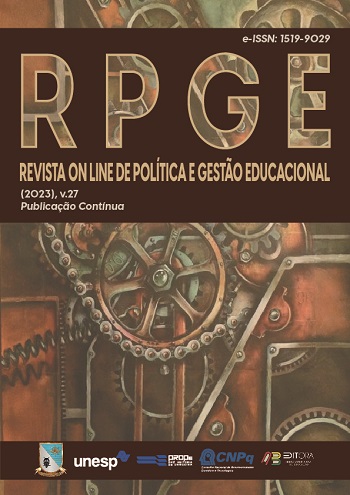Creative tools for teaching neuroanatomy and neurophysiology
An experience in the psychology course
DOI:
https://doi.org/10.22633/rpge.v27i00.17029Keywords:
Comic, Infographic, Innovation, Neuroanatomy, NeurophysiologyAbstract
With the return of in-person classes after the pandemic-related restrictions, numerous changes have emerged for teachers and students. The report highlighted the use of creative methodologies in the Neuroanatomy and Neurophysiology course, grounded in the theory of active learning. Education is constantly evolving, and the current challenge is to maintain student engagement and offer relevant knowledge. The approach involves students in teaching and learning by encouraging creation, modeling, prototyping, and collaboration, resulting in a positive learning and assessment experience. The activities mobilized empirical and scientific knowledge, promoting social interaction and dialogue and allowing students to create support materials for the course and individual studies. It was concluded that by creating an interactive teaching and learning environment in which students actively engage and apply their acquired knowledge, active methodologies enable a deeper and more meaningful learning experience.
Downloads
References
CAVALCANTI, C. C; FILATRO, A. Design Thinking na educação presencial, à distância e corporativa. São Paulo: Saraiva, 2017.
FORTE, A. Recepção Clínica. Vivadecora, [21--]. Disponível em: https://www.vivadecora.com.br/foto/129873/recepcao-clinica. Acesso em: 17 set. 2022.
HATTIE, J. Aprendizagem visível para professores: como maximizar o impacto da aprendizagem. Porto Alegre: Penso, 2017.
HUG, T. Micro learning and narration: exploring possibilities of utilization of narrations and storytelling for the designing of "micro units" and didactical micro-learning arrangements. 2005. Disponível em: http://hug-web.at/drupal/sites/ default/files/2005_Microlearning-and-Narration_Hug.pdf. Acesso em: 30 jun. 2022.
KELLEY, T; KELLEY, D. Confiança Criativa: libere sua criatividade e implemente suas ideias. Rio de Janeiro: Alta Books, 2019.
LIEDTKA, J.; OGILVIE, T. A magia do Design Thinking: um kit de ferramentas para o crescimento rápido da sua empresa. Rio de Janeiro: Alta Books, 2019.
PALÁCIOS, F.; TERENZZO, M. O Guia Completo do Storytelling. Rio de Janeiro: Alta Books, 2016.
TENÓRIO, N. et al. Uso da Storytelling para a construção e o compartilhamento do conhecimento na educação. Educação Por Escrito, v. 11, n. 2, p. 1-10, 2020. Disponível em: https://revistaseletronicas.pucrs.br/ojs/index.php/ porescrito/article/view/30601/26337. Acesso em: 30 jun. 2022.
XAVIER, A. Storytelling: histórias que deixam marcas. 10. ed. Rio de Janeiro: Best.Business, 2015.
Downloads
Published
How to Cite
Issue
Section
License
Copyright (c) 2023 Revista on line de Política e Gestão Educacional

This work is licensed under a Creative Commons Attribution-NonCommercial-ShareAlike 4.0 International License.
Manuscritos aceitos e publicados são de propriedade da Revista on line de Política e Gestão Educacional. É vedada a submissão integral ou parcial do manuscrito a qualquer outro periódico. A responsabilidade do conteúdo dos artigos é exclusiva dos autores. É vedada a tradução para outro idioma sem a autorização escrita do Editor ouvida a Comissão Editorial Científica.










